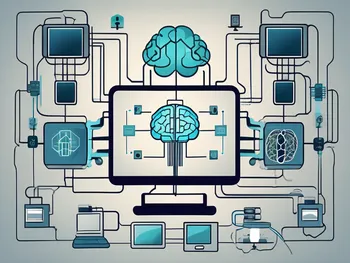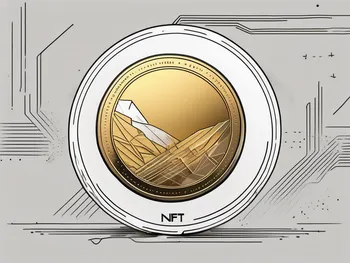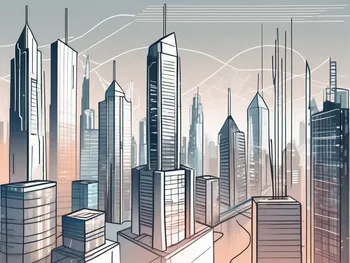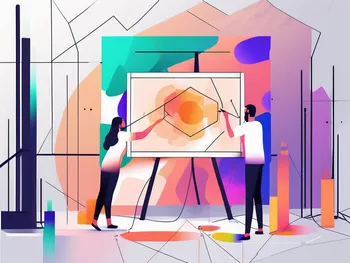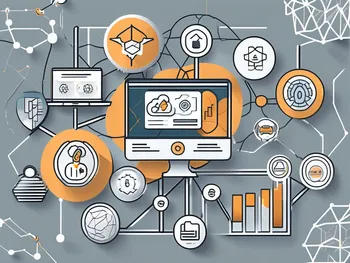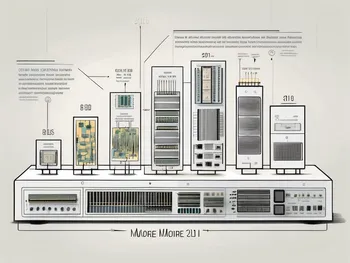How Will AI Effect the NFT Ecosystem
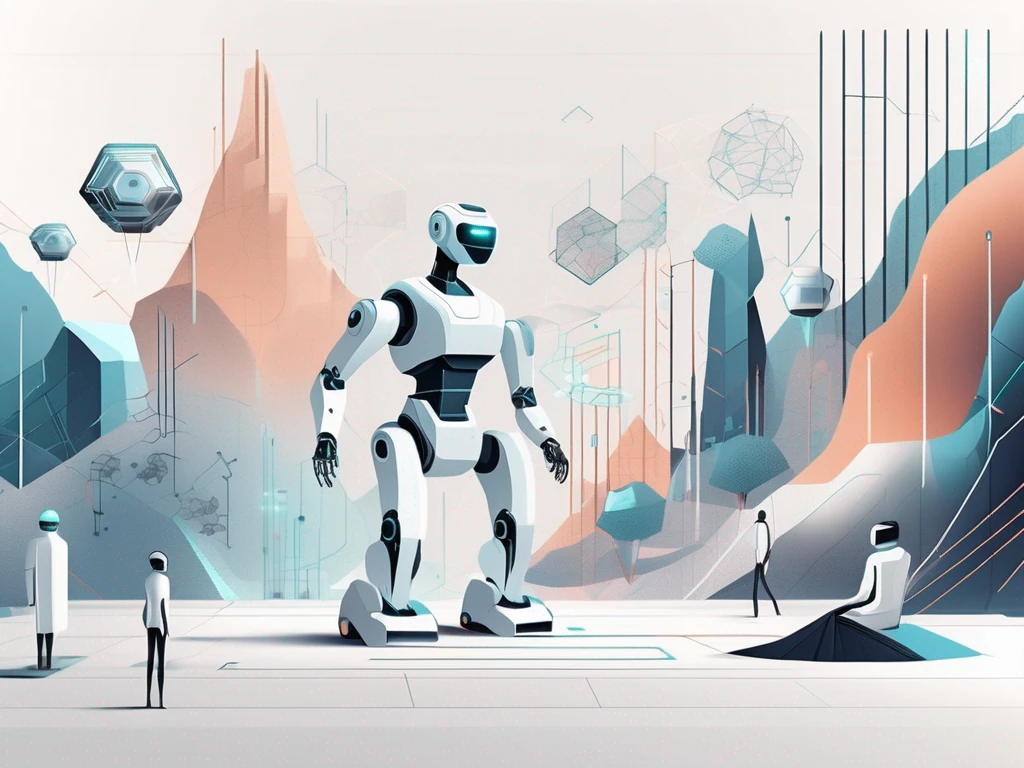
As an expert in the field of artificial intelligence (AI) and non-fungible tokens (NFTs), I am here to shed light on the fascinating intersection between these two groundbreaking technologies. In this article, we will explore how AI is poised to transform the NFT ecosystem, from creation to verification and beyond. Brace yourself for an exhilarating journey through the world of AI and NFTs.
Understanding AI and NFTs
Before diving deep, let’s set the stage by briefly defining AI and its role in the rise of NFTs in the digital world.
Defining AI: A Brief Overview
Artificial Intelligence, or AI, refers to the development of computer systems capable of performing tasks that typically require human intelligence. These systems use algorithms and data to analyze, understand, and make decisions or predictions.
AI has come a long way since its inception. It has evolved from simple rule-based systems to complex machine learning algorithms that can learn from data and improve their performance over time. This advancement in AI technology has paved the way for numerous applications in various industries, including the world of digital art and NFTs.
Now, let’s delve into the fascinating world of NFTs and how AI intersects with it.
The Rise of NFTs in the Digital World
In recent years, non-fungible tokens (NFTs) have taken the digital world by storm. NFTs are unique digital assets that are bought and sold on blockchain platforms, typically Ethereum. These assets represent ownership of digital content, ranging from artwork and collectibles to virtual real estate and music.
The concept of NFTs has revolutionized the way we perceive and value digital art. Previously, digital art was easily replicable and lacked scarcity, making it difficult for artists to monetize their creations. However, with the advent of NFTs, artists can now create limited edition digital artworks that can be owned, bought, and sold just like physical art.
NFTs offer artists, creators, and collectors new opportunities for monetization, authentication, and provenance. Artists can now receive royalties whenever their NFTs are resold, ensuring a continuous stream of income. Collectors can prove the authenticity and ownership of their digital assets through the blockchain, eliminating the risk of counterfeit or stolen artwork. Moreover, NFTs have opened up a whole new world of possibilities for digital art collaborations and interactive experiences.
But how does AI come into play in this flourishing ecosystem? Let’s find out.
AI has played a significant role in the development and growth of the NFT market. One area where AI has made a notable impact is in the creation of generative art. Generative art refers to artwork that is created using algorithms and AI models. These algorithms can generate unique and intricate designs that are impossible for humans to create manually.
AI-powered generative art platforms, such as Art Blocks and Rarible, have gained immense popularity in the NFT community. These platforms allow artists to create algorithmic art pieces that can be minted as NFTs. The algorithms used in generative art can produce an infinite number of variations, ensuring that each NFT is truly unique.
Furthermore, AI algorithms are also being used to analyze and curate NFT collections. With the vast number of NFTs available in the market, it can be challenging for collectors to discover and evaluate artworks. AI-powered algorithms can analyze metadata, image recognition, and user preferences to recommend NFTs that align with a collector’s taste.
Another exciting application of AI in the NFT space is the creation of AI-generated avatars and virtual influencers. These virtual beings, powered by AI algorithms, have gained a significant following on social media platforms. They interact with their audience, create content, and even collaborate with human artists. The ownership of these virtual influencers can be represented as NFTs, allowing fans to own a piece of their digital persona.
In conclusion, AI and NFTs are intertwined in the digital world, shaping the future of art, collectibles, and virtual experiences. AI enables the creation of unique and intricate generative art, assists in the curation of NFT collections, and even gives birth to virtual influencers. As technology continues to advance, we can expect further innovations and collaborations between AI and NFTs, opening up new possibilities for artists, collectors, and enthusiasts alike.
The Intersection of AI and NFTs
NFTs, or non-fungible tokens, have taken the art world by storm, revolutionizing the way we buy, sell, and own digital assets. These unique tokens have opened up new possibilities for artists and collectors alike, allowing for the creation and ownership of one-of-a-kind digital items. But what role does artificial intelligence (AI) play in this emerging field?
AI in the Creation of NFTs
The creation process of NFTs can be time-consuming and require technical skills. This is where AI technologies, such as generative adversarial networks (GANs), can step in to automate and enhance the artistic process. GANs can generate unique and highly realistic artwork, providing creators with a starting point or a source of inspiration. By leveraging AI, artists can save time and explore new creative directions that were previously out of reach.
Imagine a painter who wants to create a series of NFTs but is struggling to come up with fresh ideas. With the help of AI, they can input their existing artwork into a GAN and let the algorithm generate variations and new compositions. This not only sparks their creativity but also allows them to offer a diverse range of NFTs to potential buyers.
Moreover, AI can assist artists in refining their creations. By analyzing patterns and trends in the NFT market, AI algorithms can provide valuable insights on what types of artwork are in high demand. This information can guide artists in making informed decisions about their artistic direction and potentially increase their chances of success in the competitive NFT marketplace.
AI’s Role in NFT Verification and Authentication
As the NFT market continues to expand, ensuring the authenticity and provenance of digital assets becomes increasingly crucial. AI-powered algorithms can analyze various parameters like image features, metadata, and transaction history to verify the legitimacy of NFTs. This technology can help both buyers and sellers mitigate the risks of counterfeit or stolen digital assets.
Imagine a collector who wants to purchase a rare digital artwork but is concerned about its authenticity. By utilizing AI-based verification tools, they can scan the NFT’s metadata and compare it to trusted sources to ensure that the artwork is indeed genuine. This not only provides peace of mind but also adds value to the NFT market as a whole, fostering trust and confidence among participants.
Furthermore, AI can aid in the detection of copyright infringements and protect artists’ rights. By scanning the vast digital landscape, AI algorithms can identify potential cases of plagiarism or unauthorized use, safeguarding the original creators’ interests and promoting a fairer NFT ecosystem. This proactive approach to copyright protection can help artists feel more secure in sharing their work online and encourage the growth of a vibrant and ethical NFT community.
As the intersection of AI and NFTs continues to evolve, the possibilities for innovation and collaboration are endless. Whether it’s in the creation process, verification, or copyright protection, AI technologies are proving to be valuable tools in shaping the future of the NFT landscape. By embracing these advancements, artists and collectors can unlock new opportunities and push the boundaries of what is possible in the digital art world.
Potential Impacts of AI on the NFT Market
Predicting NFT Market Trends with AI
AI has the power to revolutionize market analysis by crunching vast amounts of data and identifying patterns that human analysts may overlook. By analyzing historical sales data, social media sentiment, and other relevant factors, AI models can offer valuable insights into the direction of the NFT market. This information can assist creators and collectors in making informed decisions and capitalizing on emerging trends.
AI and NFT Pricing: A New Approach
Determining the value of NFTs is a complex task, often requiring expert knowledge or subjective assessments. With AI, this process can be streamlined and made more objective. AI algorithms can assimilate vast amounts of data, including previous sales, market demand, and even cultural relevance, to estimate the fair market value of NFTs. This approach not only benefits sellers but also provides transparency and confidence to potential buyers in a rapidly evolving market.
…
The Future of AI in the NFT Ecosystem
AI’s Potential to Transform NFT Trading
Looking ahead, it’s clear that AI will continue to shape the NFT ecosystem in profound ways. As AI technologies mature, we can expect more advancements in automated trading platforms, smart contract auditing, and even AI-powered virtual assistants catering to NFT collectors and creators. The integration of AI into NFT trading will streamline processes, increase efficiency, and unlock new possibilities for growth and innovation.
The Long-term Implications of AI in the NFT Space
While the potential of AI in the NFT ecosystem is undeniably exciting, it is crucial to address the potential challenges and ethical concerns that may arise. As experts, we need to ensure that AI-directed decision-making systems are fair, transparent, and accountable. Additionally, we must continue to prioritize the protection of artists’ rights and prevent the concentration of power in the hands of a few dominant players.
As an expert in the field, I encourage creators, collectors, and enthusiasts to embrace the positive impact of AI in the NFT ecosystem while also remaining vigilant and actively participating in shaping a sustainable and equitable future for all stakeholders.
Remember, the future is not solely determined by AI or NFTs alone. It is our collective responsibility to harness their potential wisely, keeping in mind the values and principles that define our artistic and digital world.
Frequently Asked Questions (FAQ)
1. What is AI’s role in creating NFTs?
AI, specifically generative adversarial networks (GANs), can automate and enhance the creation process of NFTs, providing artists with new creative possibilities and saving valuable time.
2. How can AI help verify the authenticity of NFTs?
AI algorithms can analyze various parameters like image features, metadata, and transaction history to verify the legitimacy of NFTs, protecting buyers from counterfeit or stolen digital assets.
3. How does AI predict market trends in the NFT space?
By analyzing vast amounts of data, including historical sales data and social media sentiment, AI models can offer valuable insights into the direction of the NFT market, helping creators and collectors make informed decisions.
4. Can AI estimate the value of NFTs?
Yes, AI algorithms can assimilate data such as previous sales, market demand, and cultural relevance to estimate the fair market value of NFTs, providing transparency and confidence to both buyers and sellers.
5. What are the future implications of AI in the NFT ecosystem?
As AI technologies continue to advance, we can expect more innovations in automated trading platforms, smart contract auditing, and AI-powered virtual assistants, transforming and enhancing various aspects of NFT trading.
Throughout this article, we have explored the multifaceted relationship between AI and NFTs. The future possibilities are endless, and as an expert in the field, I am excited to witness how these two transformative technologies will shape the NFT ecosystem for years to come.
As we stand on the brink of a new era where AI and NFTs converge to redefine the digital landscape, the opportunities for innovation and investment are boundless. Morpher.com is at the forefront of this revolution, offering a cutting-edge trading platform that caters to the needs of modern investors. With its zero-fee structure, infinite liquidity, and the ability to trade across a multitude of asset classes—including the burgeoning NFT market—Morpher empowers you to navigate this exciting space with ease and flexibility. Whether you’re looking to diversify your portfolio with fractional investments, capitalize on market trends with short selling, or leverage your trades for greater potential gains, Morpher is designed to elevate your trading experience. Embrace the future of investing by joining Morpher today. Sign Up and Get Your Free Sign Up Bonus and become part of a community that’s shaping the world of trading with blockchain innovation.

Disclaimer: All investments involve risk, and the past performance of a security, industry, sector, market, financial product, trading strategy, or individual’s trading does not guarantee future results or returns. Investors are fully responsible for any investment decisions they make. Such decisions should be based solely on an evaluation of their financial circumstances, investment objectives, risk tolerance, and liquidity needs. This post does not constitute investment advice.

Painless trading for everyone
Hundreds of markets all in one place - Apple, Bitcoin, Gold, Watches, NFTs, Sneakers and so much more.

Painless trading for everyone
Hundreds of markets all in one place - Apple, Bitcoin, Gold, Watches, NFTs, Sneakers and so much more.

